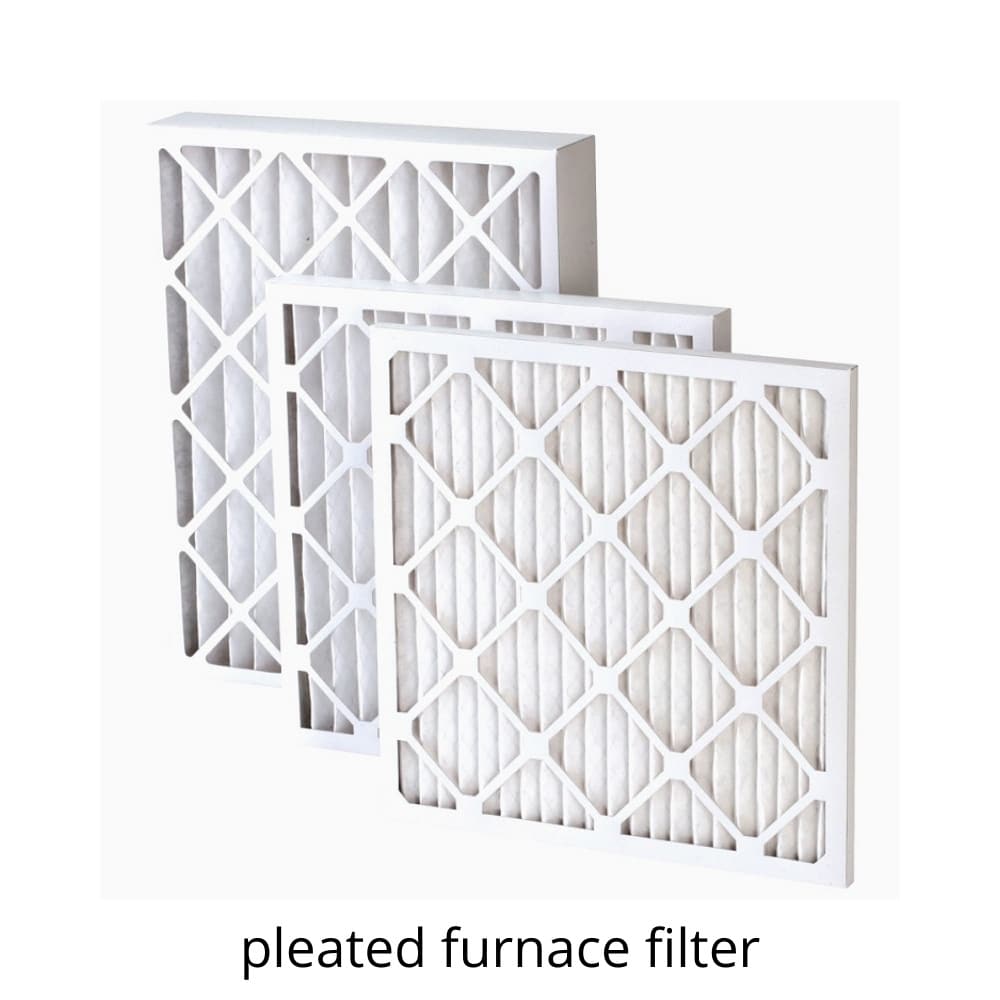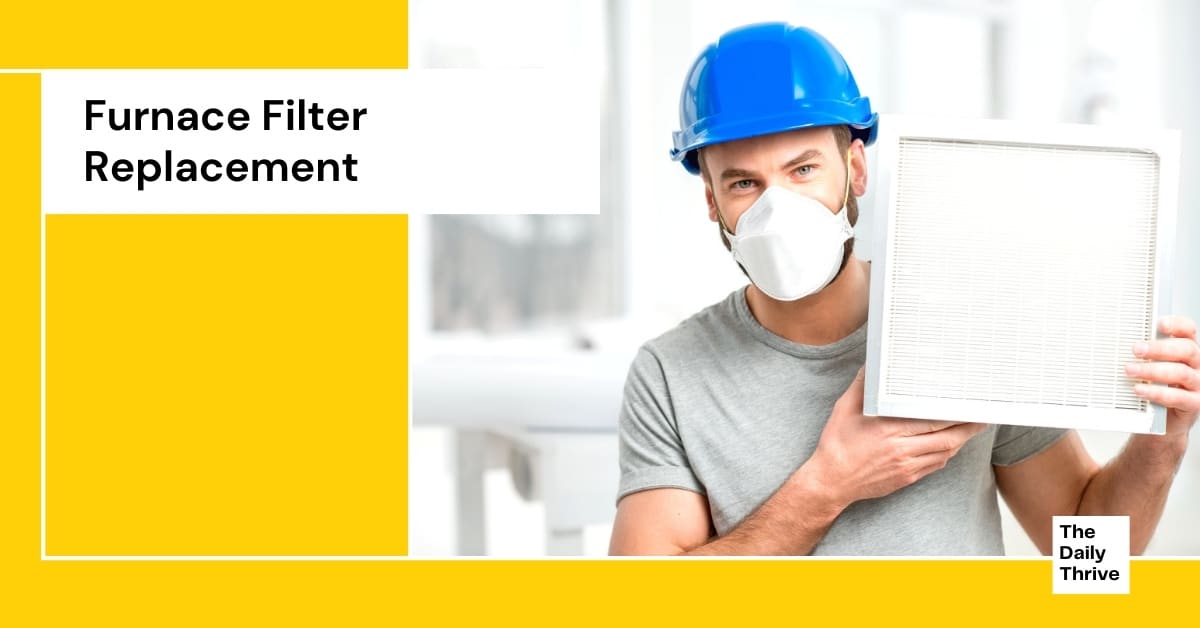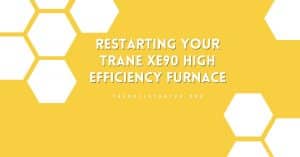A furnace filter is the most important part to provide clean and healthy air in your home environment. The filter is designed to stop airborne particles such as dust, dirt, and airborne particles from entering into the air you breathe. When you have a furnace system in the home, you must replace the filter on a regular basis to ensure the system is able to function properly. Here we have compiled pieces of information on furnace filter replacement as a guide for homeowners.
Replacing the furnace filter regularly gives advantages in creating clean air in the home and also helps to extend the life of your home heating unit.
A furnace filter is created to trap dust and pollutants that can enter the air. Over the time of operation, the filter will become clogged and will cause the energy efficiency of your furnace system to decrease. The unit will then have to work harder to perform, and this can cause you to lose valuable time on the life span of your furnace system. You will also see less energy efficiency and pay more to heat the home.
Choosing The Right Furnace Filter
A furnace is a system that is used to heat the home, which also helps to filter the air. However, the air filtering ability will depend on the furnace filter. The furnace filters help to block particles from entering the system and clogging, which will impair the heating appliance.
Types Of Furnace Filters
There are several types of filters that are used in a furnace. Some of them include the following:
- Disposable Fiberglass
This is a common type that is made of spun fiberglass that is one inch thick. They block litter, lint, and dust from getting into the system, and they are suitable for anyone home dweller who has no asthma or allergy signs. - Disposable Pleated
These filters are made of cotton paper and polyester. They get rid of mites, spores, and it needs constant changing to avoid blockage. - Permanent Electrostatic
This one uses electrostatic paper or cotton filters that are self-charging. They are able to block extra tiny particles that are not visible with naked eyes. The electrostatic filters are removable and washable, which makes them possible to reuse then. - High-efficiency pleated
These are best used in hospitals since they trap the smallest particles in the air. They are also the most recommended for people who have allergies and asthma. They are made of high synthetic cotton that is pleated. - Disposable Electrostatic
They are relative to the permanent electrostatic, but the filters are not reusable; for that, you will need to change them after a year or less.

With so many types of filters for furnaces, you will need to make some considerations when choosing the right furnace air filter. For that, you will need to consider some aspects. The type of filter is one of the main determinants, which will be in relation to consider the dwellers in the house, or where you will use the filters in.
Other aspects that will be considered in furnace filter replacement include the following:
The filter size
You will need to consider the size of the filters before buying them. Ensure that you consider the height, width, and thickness of the filters.
The most typical sizes for a furnace filter used in residential units are 16″ x 20″, 20″ x 25″ and 16″ x 25″.
Check your furnace’s manual to give you the exact filter size to buy. If you cannot locate this information, use a ruler to measure the furnace filter dimensions for height, width, and thickness.
The filter rating (MERV rating)
The Minimum Efficiency Reporting Value – MERV rating will range between 1 and 20. This is the standard rating system used by The American Society of Heating Refrigeration and Air Conditioning Engineers (ASHRAE).
The rating will determine the efficiency of the filter to trap the particles in the air. The higher the rating, the better its efficiency in removing contaminants and pollutants. This will also impact in filter price. As furnace filter cost is based on MERV rating, material, thickness, and some other factors.
Filters that have the 6 to 12 MERV rating are designed for residential use. However, if anyone in your family has asthma or allergies, or if you live in a very dusty environment, you should consider using a MERV 12 or higher.
| MERV | Min. Particle | Controlled Contaminant | Application |
|---|---|---|---|
| 1–4 | > 10.0 μm | Pollen, dust mites, cockroach debris, sanding dust, spray paint dust, textile fibers, carpet fibers | Residential window AC units |
| 5–8 | 10.0–3.0 μm | Mold, spores, dust mite debris, cat and dog dander, hair spray, fabric protector, dusting aids, pudding mix | Better residential, general commercial, industrial workspaces |
| 9–12 | 3.0–1.0 μm | Legionella, Humidifier dust, Lead dust, Milled flour, Auto emission particulates, Nebulizer droplets | Superior residential, better commercial, hospital laboratories |
| 13–16 | 1.0–0.3 μm | Bacteria, droplet nuclei (sneeze), cooking oil, most smoke, and insecticide dust, most face powder, most paint pigments | hospital & general surgery |
| 17–20 | < 0.3 μm | Virus, carbon dust, sea salt, smoke | Electronics & pharmaceutical manufacturing cleanroom |
Always check if your furnace system has a maximum MERV rating. The wrong type of air filter can force your system to work harder and increase the risk of it breaking down.
Furnace Filter Replacement Guide
Installing the new filter is not at all complicated. The first thing that must be done is to ensure everything is safe by turning off the power in the furnace. It is also needed to avoid dust getting into its delicate parts. After that, it is simply just taking out the old filter and sliding a new one into the same slot. And then, you’re all set.
You’ll know which way to install the new filter by paying attention to the arrows indicated outside. Since the blower is the last defense in trapping debris, a filter’s firm or rough side is placed near it. I’ve written a detailed guide about this; you can find it here: How to determine correct furnace filter direction.
DIY Steps to Replace Furnace Filter
Tools You Will Need:
- New Filter
- Screwdriver
- Garbage Bags
Step #1
First, you need to turn off the furnace system. You do not want the unit to turn on while you are changing out the filter. Turn the thermostat to the OFF setting before you start the furnace filter replacement process. Make sure that everyone in the home knows that you are working on the furnace and not turn the unit back on.
Step #2
You will now be ready to locate the filter of your system. The exact area will vary based on the make and model of your unit.
The filter is commonly located in the air-intake grill area. You can check the manufacturer manual of your system to see the exact placement of the air filter.
If you do not have the manual, remove the front air-intake grill to see if the filter is located in this area. Or look up if you can find a hatch near the return air duct of the system for the filter to be in this area.
Step #3
Once you locate the filter, you will be ready for removal. Slide the old air filter out and be aware of which way the arrows of the filter are facing so you know which way to place the new filter. Use a garbage bag to place the old air filter inside so that you do not dirty up your home with dust and dirt.
Step #4
Install the new filter and place it in the area with the arrows pointing in the correct manner. Replace the grill or access hatch, and you are ready to turn your unit back on.
Step #5
Turn the furnace back on and rest easy, knowing that your HVAC system is providing clean and warm air to your home!
They say practice makes perfect, so replace your furnace filter regularly, and you’ll reap the benefits of having a clean filter all the time with regards to your health and lower energy bills.
How Often Should You Replace Your Furnace Filter?
A clean furnace filter will make a big difference in air quality in your home. Things you can do on your own to get a better air quality is to simply change your furnace filter on a regular basis. You may also need a furnace humidifier if the indoor humidity levels are above 60 percent.
There’s no exact answer to how often you should change your air filter. The frequency at which your air filter should be changed depends on a variety of factors.
The general rule is, the furnace filter should be changed every three months. Depending on the type of furnace filter you choose and the thickness is, you may want to change it more often.
Conclusion
Clean air is something we all need for a healthy home environment. Changing furnace filters on a regular basis has great impacts on home comfort and healthy air quality. You will want to make sure your unit runs as efficiently as possible by regularly replacing your furnace filter. This will also increase your unit’s lifespan and minimize your electricity bill.
If you need assistance with changing your furnace filter, contact a local heating and cooling professional by using our Free HVAC Quotes.






